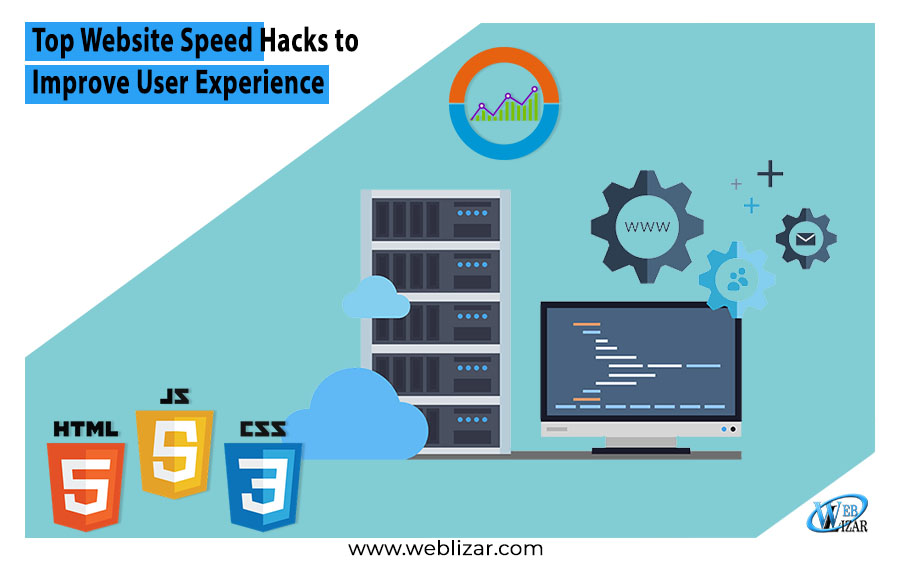Consumer behavior has shifted and providing a powerful user experience is more important than ever before. There are a number of factors involved in providing a user experience that engages and converts, but website speed remains one of the most impactful.
For instance, 47 percent of users demand sites load in two seconds or less. Going a bit further, 40 percent of people will abandon a site after waiting three seconds for a page to load, visiting a competitor site instead.
This is a pretty clear call to action for website owners and managers to ensure site speed is optimized to the fullest. Here’s how you can tweak your site’s speed for optimal user experience that leads to conversions.
What Type of Website Hosting Service Do You Have?
Did you know that the type of hosting service you have could affect your site speed? This is because most websites, especially somewhat new ones, have a shared website hosting service. It is affordable, but at a certain point, you could be losing profits due to poor site speed.
Why? The reason your shared hosting service slows your site speed is because you are “sharing” a server with hundreds, maybe even thousands, of other sites. If you are sharing a server with high traffic sites that receive a ton of traffic, they will pull more bandwidth, disk space, and other performance factors.
Check the type of website hosting service you have and decide if it’s time for an upgrade. The fix may be even simpler. For instance, you can speed up your site by using a WordPress content delivery network (CDN). This can speed up your site by 70 percent.
Other types of website hosting services that may be better are
- Cloud web hosting (private and public)
- Virtual private server (VPS) hosting
- Dedicated web hosting
- Reseller/affiliate web hosting
If hosting isn’t an issue, than it’s time to look inside your website for issues. It could be website design or poor optimization of visual content within web pages.
Optimize Images and Videos for Optimal User Experience
Visual content has become a very important engagement factor for sites in almost all industries. This is due to the overwhelming demand for visual content like videos from consumers. In fact, 85 percent of consumers want more videos from brands.
However, not optimizing images and videos on page properly has led to a site speed grind. For instance, if you upload high-resolution images to your ecommerce product pages in a large file size, it will cause those product pages to load at a snail’s pace.
To combat this, you can compress images to ensure they are optimized for speed. There are plenty of online tools that do this for you, including plugins for WordPress you can utilize for total image optimization.
Videos are even easier to optimize. Instead of uploading videos to your website, upload them to YouTube and then embed the YouTube code into your webpage. This keeps everything running smoothly and loading quickly.
Cache, Cache, Cache
Having caching setup on your website can greatly reduce page load time for return visitors. Why? If you get a lot of repeat visitors, like ecommerce sites, member sites, or popular blog sites, the people that visit your site have already gone through the connection process.
With caching setup, essential aspects of your site will get uploaded and stored onto a user’s hard drive for safe temporary keeping. When they return to your website, this information stored on the hard drive will be conjured up and the site will load at lightning speed, since requests to the server will be minimized.
Minimize CSS and JavaScript Files
Site speed can be impacted by the amount of JavaScript and CSS files on your site. In fact, you can add a lot of these types of files by uploading multiple plugins to your website. This can slow your site down a lot!
To get rid of CSS and JavaScript files that you simply don’t need, you can group them together in a nice concise file. So the next time your site needs to call on those JavaScript or CSS files they will be in one easy to send file.
You can also make the individual files smaller to decrease the amount of space they occupy. There are plugins, like Autoptimize to help you speed up your site.
Wrapping Up . . .
Site speed is an essential element to providing the best user experience and keeping your customers from hopping from your slow loading page to one of your competitors’ pages.
Is your website speed good enough? You can use online speed test tools like Pingdom to get a clearer picture of your site speed. This will help you troubleshoot speed issues you need to fix for more traffic, engagement, and conversions.

